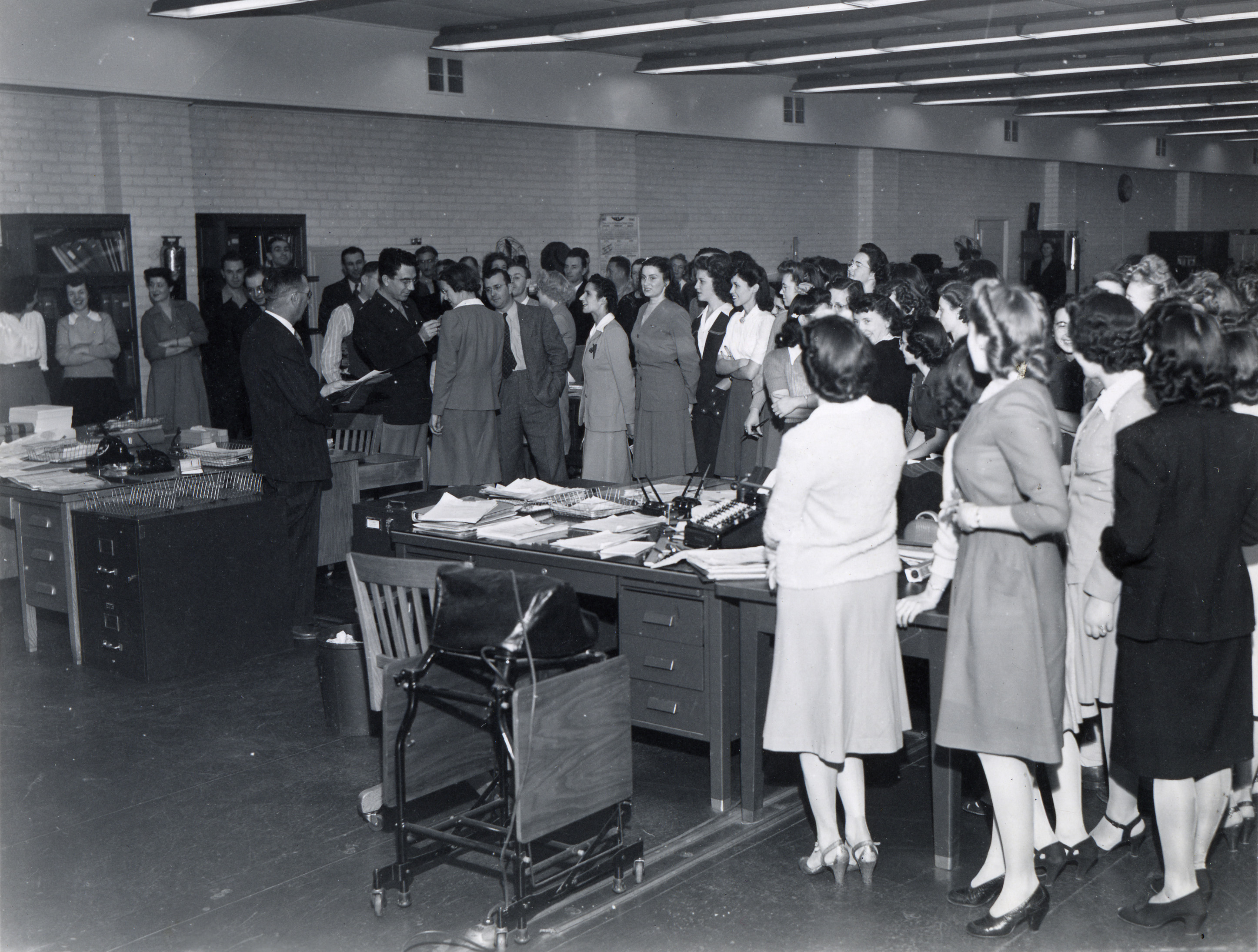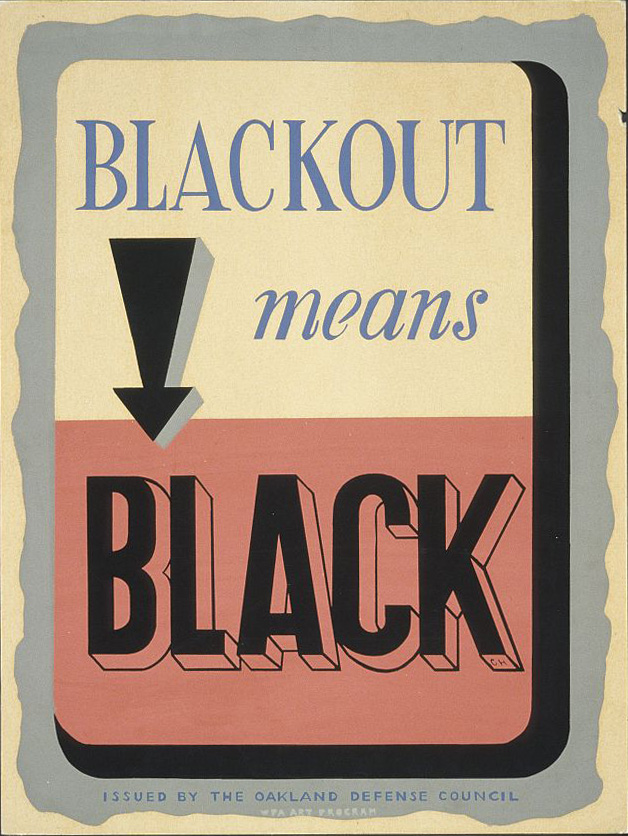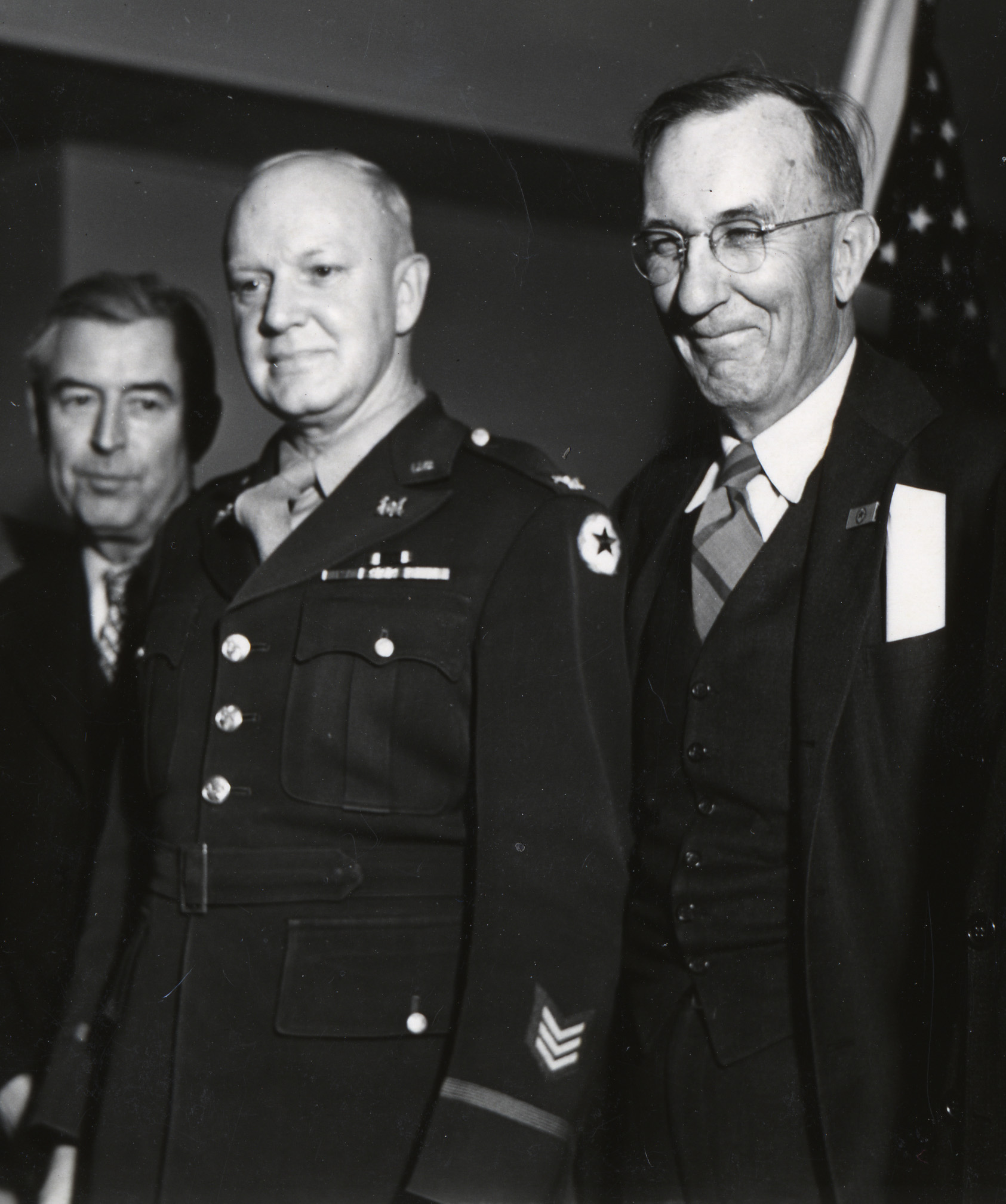Few events in American history resonate with as much force as the surprise attack on Pearl Harbor on December 7, 1941. Japan saw it as a preventative action to keep the U.S. Pacific Fleet from interfering with its war plans in Southeast Asia. The attack on Hawaii was part of a larger coordinated effort against U.S. and British possessions throughout the Pacific, and the immediate results were devastating for the United States and its soon-to-be Allies. At Pearl Harbor alone, 2,335 American servicemen and 68 civilians lost their lives, and all eight U.S. Navy battleships were badly damaged with four sunk. The attack came as a profound shock to the American people and was followed shortly by a declaration of war against Japan and then Germany.
The ensuing months saw the U.S. Army Corps of Engineers undergo a rapid and massive mobilization unprecedented in its long history. The war touched every district and division. One Sacramento District employee who later served as Acting District Engineer, Henry Rich, described his sleepy workplace on the eve of war – “things were rather peaceful, and we had about 300 employees, counting everyone in the main office, plus all field personnel and maybe counting a couple of cats in the warehouse at Rio Vista.” When war came, “it seemed everything was dumped into the District’s lap, and we started to grow and grow and grow, with offices in six other buildings in Sacramento, plus six large field offices.” By the end of 1942, the district had ballooned to more than 2,000 people scattered throughout the region and among several states – at Rio Vista, Marysville, Stockton, Fresno, Bakersfield, Reno, and Salt Lake City.

Group of Sacramento District staff at a Service Awards ceremony, 1943.
Courtesy Sacramento District.
Two circulars recently pulled from Sacramento District archives shed light on the dedication and hard work of the district employees, the immensity of the mobilization work, and the extant trauma that reverberated even in locations far from the fighting. The first of these directives, drafted by Sacramento District Engineer Lt. Col. Robert C. Hunter and released on January 24, 1942, established a seven-day work week. Each employee was to work “at least forty-eight hours per week to be performed over a period of six days, thus providing for one day off duty each week per person.” The same circular set conditions for “second and third shifts.” Hunter added that “section heads will designate responsible employees… for Sunday work.”


Sacramento District Staff in 1943:
Mr. Griffith, Col. Robert C. Hunter, District Engineer, and Henry M. Rich.
Courtesy Sacramento District
A wartime poster from the W.P.A.
Art Program reminding citizens
of the blackout. Courtesy Library of Congress
The second circular, dated two weeks later on February 7, 1942, had as its subject, “Blackouts – precautionary measures.” Though its author, Lt. Col. Clay Anderson, conceded that “the possibility of this location being attacked from the air is thought to be extremely remote,” he put into place “certain advance precautionary planning” in which the staff would, in the event of a blackout and “should actual bombing ever occur, assemble away from the windows on the second and third floors which afford the greatest protection.” The circular also identified the various exits from the Wright Building – the location of the Sacramento District headquarters.
In the ensuing several years of the war, the Sacramento District and its sister organizations across the United States oversaw the construction of 3,000 command installations, 300 major industrial projects, and hundreds of miscellaneous facilities including 500 camps, 765 airfields, 167 storage depots, and numerous training schools, ports of debarkation, hospitals, and other facilities. Overall the Army Corps of Engineers managed over $11 billion ($153 billion in today’s dollars) worth of construction – just in the continental United States.
[*Henry Rich quotes from Commitment to Excellence: A History of the Sacramento District (1929-1973)]
See the two circulars below. Click on each for full sized image.
.jpg?ver=2018-12-07-155531-340)
.jpg?ver=2018-12-07-155529-793)
***
December 2018. No. 132.